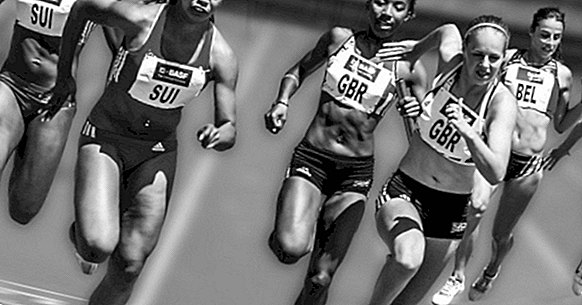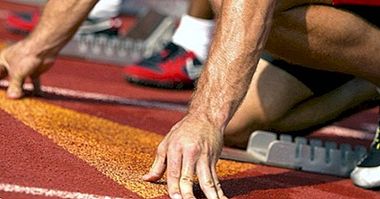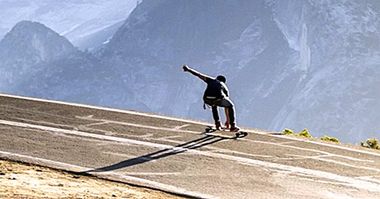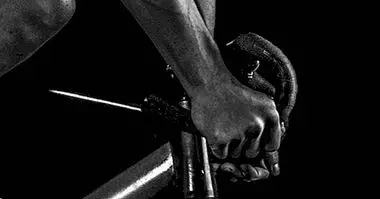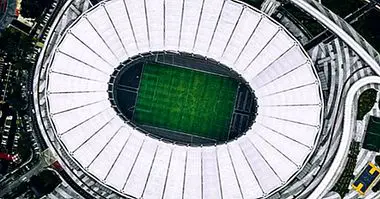Overtraining syndrome: burned athletes
The practice of physical exercise produces both psychological and physical benefits. But, in some cases, h acer sport can also be counterproductive , because anything taken to the extreme can be harmful.
The addiction to physical exercise is one of those phenomena that has caught the attention of psychologists, but so has the Staleness or Overtraining Syndrome . This syndrome has been observed more in athletes, though not exclusively.
Overtraining Syndrome causes a decrease in the performance of the athlete
As we saw in the runnorexia article, Excessive physical exercise can lead some people to a severe addiction . In contrast, in other cases the excess physical training can lead to the opposite, for example: feelings of fatigue, lethargy, loss of vigor, insomnia, depression etc., and this is what happens in the Staleness.
Together with these symptoms, the Overtraining Syndrome (SSE) is characterized by a decrease in the performance of the athlete, caused by stressors that are a consequence of excessive training and lack of adequate recovery to. Other extra-sports stressors (social, labor, economic, nutritional, etc.) also favor the appearance of this syndrome.
Overtraining Syndrome is associated with prolonged and / or excessive training and inadequate recovery
The sports planning correct is very important because it allows the athlete to adjust to the General Adaptation Syndrome, that is, it allows the adaptation of the body of the athlete against training and the stimuli that cause stress (physical, biochemical or mental).
Therefore, good planning contributes to increasing sports performance, and the alternation between work and rest allows a sufficient recovery and an improvement in the physical qualities of the individual .
Overtraining Syndrome: Burnout of athletes
Any training session is likely to cause a state of fatigue (acute), but nor you should confuse acute fatigue with Overtraining Syndrome , which refers to a chronic and generalized fatigue and, in addition, presents psychological symptoms, such as emotional fatigue, apathy or depression.
The mechanisms of acute fatigue depend on the duration and intensity of exercise, but when fatigue is prolonged, there is a serious decrease in sports performance, accompanied by a set of physiological and psychological symptoms of exhaustion. In many cases, this can cause the abandonment of sports practice .
Some authors use the term in Burnout or "Be burned" (more used in the workplace) to talk about Staleness, since both are characterized by emotional exhaustion, depersonalization and reduced personal fulfillment.
Symptoms of Overtraining Syndrome
Many studies have been carried out to provide information about the Overtraining Syndrome, and it has been concluded that the symptoms described so far vary according to the subject.
All in all, the American Physical Therapy Association (American Physical Therapy Association) has established a series of symptoms that occur frequently when an individual suffers from Staleness . It is important to note that not all will necessarily appear. The symptoms of Overtraining Syndrome are the following:
- Physical and Physiological : increased blood pressure and increased heart rate during rest, respiratory problems, high body temperature, hypotension, weight loss, loss of appetite, increased thirst, gastrointestinal problems and muscle pain.
- Immunological : vulnerability to infections (especially of the respiratory tract) and reduction of the body's defenses, decrease in the capacity to avoid injuries, decrease in the speed of healing, lower production of red blood cells (greater fatigue).
- Biochemicals : increase of cortisol (hormone related to stress), adrenaline, serotonin, increase of fatty acids in plasma, decrease in muscle glycogen, hemoglobin, iron and ferritin.
- Psychological : alterations in mood (for example depression), lethargy, anxiety and irritability, decreased motivation, lack of concentration, low tolerance to stress, low self-esteem and lack of confidence, loss of libido, sleep disorders and feeling exhaustion (physical and emotional).
The importance of psychological indicators in diagnosis
Both for psychopathology and sports psychology, the Stanleness arouses much interest. The psychological indicators turn out to be very important for the diagnosis.
Previously, apart from the decline in sports performance, other physiological variables had been suggested as possible markers of this syndrome , for example, decreases in cardiac pressure or elevations in the cortisol level. These markers, however, have not proven to be reliable markers.
Over time, experts have realized that the best indicators for this syndrome are psychological or psychophysiological. A very useful and widely used tool in the world of sports and physical training is the "Profile of Mood States (POMS)”.
A questionnaire that evaluates the following emotional states: tension, depression, anger, vigor, fatigue Y confusion. The normal population tends to score lower in negative emotions (confusion, fatigue, etc.) and higher in positive (vigor). This is known as "iceberg profile". On the contrary, people with SSE score inversely.
Unlike the physiological markers, the POMS tool is more economical, the scores are easy to obtain and its determination is not invasive. So that becomes an ideal tool for the diagnosis of Staleness .
Causes and consequences for the SSE organism
Due to the complexity of this phenomenon, looking only at the physiological factors would be a bias on this condition. The causes of the Staleness and the damages that it produces in the organism still are not at all clear .
Neurological factors
According to the model of Armstrong and Van Hees, the hypothalamus seems to have an important function , it would activate both the Sympathetic-adrenomuscular axis (SAM) that involves the sympathetic branch of the autonomic nervous system, and the Hypothalamic-pituitary-adrenocortical axis (HPA). It is not the objective of this article to explain this model, since it can be quite complex.
Now, as an idea, it is important to understand that the neurotransmitters would play an important role in this syndrome . For example, serotonin, which seems to play a very important role in the Staleness.
Psychological and physiological factors
Regarding the body's immune response, another complementary model seems to indicate that due to excessive training, lack of rest and other factors that favor the onset of the syndrome (for example, psychosocial stress or psychological problems of the individual), what would be known as "Model of the cytosines " of Smith.
This model states that excessive and prolonged training together with other causes, would increase the number of cytokines product of the injuries of skeletal muscle, bone and joints caused by overtraining. These changes are related to a depression of the immune function and can expose the individual to an increased risk of experiencing infections and diseases.
Overtraining Syndrome Treatment
The treatment should be used on the different symptoms that the patient presents, and usually begins with the physical aspect, treating the physiological symptoms. Once the physiological symptoms have been treated, psychological symptoms may be addressed, which require the presence of a psychologist . Restoring control over sleep hygiene and proper diet are also very important.
Regarding physical training, and although some experts propose the total suspension of physical exercise, it seems to be more effective an adequate regulation of the same and not the total suspension. From the start, it is important to work on regenerative resistance, through swimming, cycling or trotting . Gradually, volume and intensity must be increased, and there must be an adequate relationship between the progressive loading of training and recovery.
Bibliographic references:
- Kellmann M. (2002). Underrecovery and overtraining. In: Enhancing recovery, preventing underperformance in athletes. Champaign (IL): Human Kinetics, 1-24.
- Palmer C. and Mitchell J. L. (2015). When (or how) do the Olympics become 'stale'? Sport in Society: Cultures, Commerce, Media, Politics, 18 (3), 275-289.

